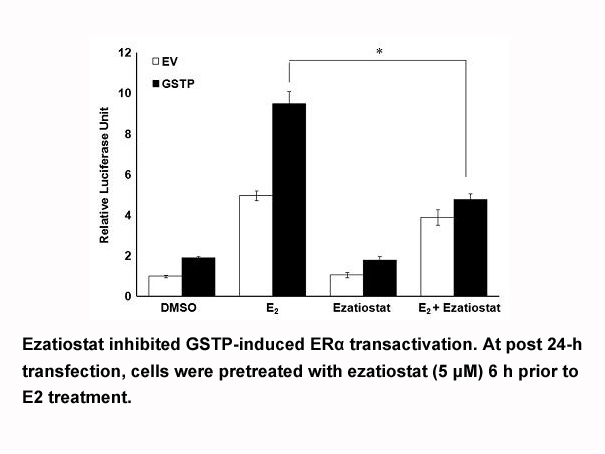Archives
Besides degrading cholesterol the cholesterol degradation pa
Besides degrading cholesterol, the cholesterol degradation pathway also offers a route to obtain useful starting materials for the production of steroid drugs and hormones. Indeed, steroids are among the most marketed pharmaceuticals with about 300 approved steroid drugs [15] and a worldwide market of approximately 10 billion USD per year [16]. On the other hand, for some pathogenic microorganisms, the steroid catabolic pathway is intimately involved in pathogenicity and virulence. This is in particular the case for pathogenic bacteria such as Mycobacterium tuberculosis and Rhodococcus equi, which depend on cholesterol for survival inside macrophages [17,18]. Finally, the pathway is important for clearance of steroid hormones released into the aquatic environment by human activity, where they may affect the physiology of aquatic organisms [19,20]. Thus, microbial steroid degradation and conversion is of interest to multiple fields.
One of the important steroid-degrading enzymes is 3-ketosteroid Δ1-dehydrogenase (3-oxosteroid 1-dehydrogenase; 4-ene-3-oxosteroid:(acceptor)-1-ene-oxidoreductase; EC 1.3.99.4; Δ1-KSTD). In bacteria, the enzyme is crucial for activating the steroid nucleus for degradation, under both aerobic and punicalagin australia conditions, by catalyzing a 1(2)-dehydrogenation reaction. The enzyme is also important for the steroid industry since it provides important starting materials for the production of steroidal drugs and hormones. Moreover, Δ1-KSTD has been validated in human macrophage cells as a good target for drug development to combat M. tuberculosis and related organisms [21].
3-Ketosteroid Δ1-dehydrogenase and steroid degradation
— The introduction of a 1(2)-double bond into the steroid nucleus by Δ1-KSTD constitutes an essential step in microbial steroid degradation. Early research revealed that aerobic fermentation of AD (8) with a Pseudomonas species led to the opening of the steroid B-ring yielding the phenolic compound 3-HSA (11). This biotransformation appeared to involve a 1(2)-dehydrogenation reaction (F in Fig. 1, presumably catalyzed by a Δ1-KSTD) and a 9α-hydroxylation reaction (G, presumably catalyzed by a 3-ketosteroid 9α-hydroxylase), followed by a spontaneous reverse-aldol type conversion (reaction H) [42]. Fermentation of AD (8) with Nocardia A20-1 0 gave 3-HSA (11) and 9α-hydroxy-4-androstene-3,17-dione (9-OHAD; 34) as products, confirming that 9α-hydroxylation had taken place. Subsequent fermentation of the 9-OHAD product with a 1(2)-dehydrogenating bacterium yielded 3-HSA, confirming the 1(2)-dehydrogenation [43,44]. It was postulated that the 9-OHAD conversion proceeded via the unstable 9-OHADD (10) to yield 3-HSA [42,45]. A similar conversion, i.e. 1(2)-dehydrogenation followed by a spontaneous reverse-aldol reaction, was observed in the A-ring aromatization of 4-androsten-19-ol-3,17-dione (38) to estrone (39) during fermentation with the Pseudomonas species mentioned above [45] and Moraxella sp. [46]. These results suggest that the Δ1-KSTD and 3-ketosteroid 9α-hydroxylase activities prime the steroid nucleus of Δ4-3-ketosteroids for aerobic degradation via the 9,10-seco pathway (magenta arrows in Fig. 1) by opening the B ring.
AD (8) is a common substrate of Δ1-KSTDs [27,28,29,47,48,49,50,51,52,53], indicating that cholesterol side-chain degradation may precede steroid nucleus opening. This was particularly observed in M. fortuitum NRRL B-8153 [54], R. jostii RHA1 [8], and M. bovis BCG [7]. However, in other microorganisms, such as R. equi (synonym Nocardia restrictus) ATCC 14887 [12,55] and M. tuberculosis H37Rv [56], the side chain and nucleus degradations apparently occur simultaneously and independently. In these cases, the 1(2)-double bond is introduced in cholesterol degradation intermediates earlier than AD. For instance, the 3-ketosteroid 9α-hydroxylase from M. tuberculosis H37Rv has a higher specificity constant toward 3-oxo-23,24-bisnor-chola-1,4-dien-22-oic acid (3-oxo-1,4-pregnediene-20-carboxyl-CoA; cf. 7) than ADD (9) [56], suggesting that 1(2)-dehydrogenation has taken place at 7 or earlier intermediates. Similarly, the Δ1-KSTD from Sterolibacterium denitrificans Chol-1ST prefers 4-cholesten-3-one (2) over AD as its substrate [47]. Thus, 1(2)-dehydrogenation by Δ1-KSTDs may also occur during the early steps of cholesterol degradation (dotted bonds in Fig. 1).
0 gave 3-HSA (11) and 9α-hydroxy-4-androstene-3,17-dione (9-OHAD; 34) as products, confirming that 9α-hydroxylation had taken place. Subsequent fermentation of the 9-OHAD product with a 1(2)-dehydrogenating bacterium yielded 3-HSA, confirming the 1(2)-dehydrogenation [43,44]. It was postulated that the 9-OHAD conversion proceeded via the unstable 9-OHADD (10) to yield 3-HSA [42,45]. A similar conversion, i.e. 1(2)-dehydrogenation followed by a spontaneous reverse-aldol reaction, was observed in the A-ring aromatization of 4-androsten-19-ol-3,17-dione (38) to estrone (39) during fermentation with the Pseudomonas species mentioned above [45] and Moraxella sp. [46]. These results suggest that the Δ1-KSTD and 3-ketosteroid 9α-hydroxylase activities prime the steroid nucleus of Δ4-3-ketosteroids for aerobic degradation via the 9,10-seco pathway (magenta arrows in Fig. 1) by opening the B ring.
AD (8) is a common substrate of Δ1-KSTDs [27,28,29,47,48,49,50,51,52,53], indicating that cholesterol side-chain degradation may precede steroid nucleus opening. This was particularly observed in M. fortuitum NRRL B-8153 [54], R. jostii RHA1 [8], and M. bovis BCG [7]. However, in other microorganisms, such as R. equi (synonym Nocardia restrictus) ATCC 14887 [12,55] and M. tuberculosis H37Rv [56], the side chain and nucleus degradations apparently occur simultaneously and independently. In these cases, the 1(2)-double bond is introduced in cholesterol degradation intermediates earlier than AD. For instance, the 3-ketosteroid 9α-hydroxylase from M. tuberculosis H37Rv has a higher specificity constant toward 3-oxo-23,24-bisnor-chola-1,4-dien-22-oic acid (3-oxo-1,4-pregnediene-20-carboxyl-CoA; cf. 7) than ADD (9) [56], suggesting that 1(2)-dehydrogenation has taken place at 7 or earlier intermediates. Similarly, the Δ1-KSTD from Sterolibacterium denitrificans Chol-1ST prefers 4-cholesten-3-one (2) over AD as its substrate [47]. Thus, 1(2)-dehydrogenation by Δ1-KSTDs may also occur during the early steps of cholesterol degradation (dotted bonds in Fig. 1).